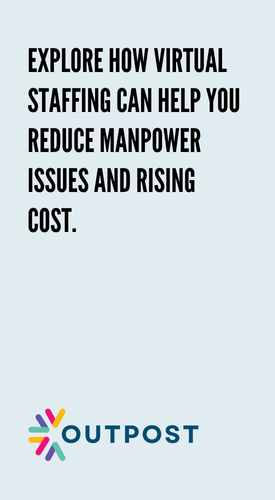Patients won’t wait for your clinic to get organised—they’ll just move on.
One unanswered call. One vague message. One forgotten follow-up. These are the quiet reasons patients stop coming back—and you often don’t find out until they’re already gone.
That’s why more practices are turning to a virtual medical receptionist in Singapore. The virtual medical receptionist isn’t just a backup anymore—they’re a vital part of modern patient experience.
So what exactly can you offload without losing control? Below is a step-by-step breakdown of the core responsibilities you can delegate today—plus the setup that makes it all work.
1. Handling Incoming Phone Calls Without Delay
Every missed call is a missed opportunity. Patients expect fast answers—even for simple things like confirming an address or checking open slots.
A virtual medical receptionist can:
- Answer and route incoming calls using VoIP or cloud systems
- Log call outcomes (e.g., scheduled, cancelled, no answer)
- Leave call notes inside your EHR
- Escalate urgent cases to in-clinic staff immediately
Many clinics working with Outpost use call-handling protocols to keep tone and speed consistent—even when the receptionist is remote.
If your team is still juggling calls between consults, this is the first task you should offload.
2. Managing Appointment Scheduling and Rescheduling
If your calendar is messy, your clinic is chaotic.
Offloading appointment handling means:
- Booking based on real-time availability
- Adjusting slots when patients cancel or run late
- Sending confirmations via SMS, email, or WhatsApp
- Blocking off times for breaks, holidays, or provider changes
- Following custom rules you set (e.g., no double bookings, 30 mins per telehealth)
This is one of the most immediate time-savers a virtual medical receptionist can take on—and it doesn’t require complicated systems to get started.
3. Following Up With No-Shows and Late Patients
Your team shouldn’t spend time chasing people who missed their slot. But someone should.
A virtual medical receptionist can:
- Message or call no-shows with a polite follow-up
- Offer rescheduling options and log the outcome
- Mark frequent no-shows and flag them internally
- Send pre-appointment reminders to reduce no-show rates long term
This kind of routine follow-up improves clinic efficiency—and patient satisfaction—without pulling your nurses or admin team off higher-value tasks.
4. Managing WhatsApp, SMS, and Email Replies
Not all communication happens over the phone. Patients text, message, and email—and they expect replies fast.
Your virtual receptionist can:
- Reply to standard queries using approved scripts
- Confirm appointment times or send links to directions
- Triage requests based on urgency
- Escalate clinical questions to the appropriate staff
The key is clear communication guidelines.
5. Supporting Telehealth Patient Check-ins
Virtual care isn’t just about video calls—it’s about preparation and follow-up.
A virtual medical receptionist can:
- Send the session link to patients ahead of time
- Confirm they’re logged in and ready
- Help troubleshoot minor access issues
- Reschedule or follow up if the patient doesn’t show
- Coordinate with providers to adjust timing if earlier sessions run long
This keeps your telehealth service smooth—and avoids wasted slots due to technical delays.

6. Updating Patient Records and Admin Details
You don’t need your doctors or nurses fixing typos or updating addresses.
Tasks you can offload include:
- Inputting new patient details from intake forms
- Updating contact info or emergency contact numbers
- Flagging missing insurance or payment data
- Tagging patient files with follow-up notes or reminders
These small tasks pile up fast when left to your in-person team. But they’re easy to manage with a virtual medical receptionist who’s trained to follow your system.
7. Sending Routine Reminders and Recalls
Don’t leave it to chance that patients remember their appointments—or that they return for follow-up care.
Your receptionist can:
- Send day-before reminders for all scheduled visits
- Automate routine messages (e.g., 6-month dental recalls, yearly physicals)
- Follow up on lab result reviews or referral status
- Track patient replies and adjust the schedule accordingly
A few small touches like this go a long way toward keeping your patient base engaged.
8. Light Billing or Payment Coordination (If Set Up Properly)
This isn’t for everyone, but some clinics do delegate billing-related admin once trust is built.
A virtual medical receptionist may:
- Send payment reminders for outstanding bills
- Direct patients to payment portals
- Flag billing issues for your internal finance team
- Answer non-clinical payment queries using preset scripts
This should only be done once you’ve clearly outlined access rights and SOPs. It’s one of those considerations before hiring someone to handle sensitive tasks.
9. Assisting With Internal Task Tracking
If your clinic uses project boards, spreadsheets, or shared to-do lists, your receptionist can help keep it all updated.
That includes:
- Updating staff calendars
- Marking completed calls or messages
- Tagging overdue patient actions
- Organising shared folders for easy access
For teams using services like Outpost, this kind of internal coordination often becomes part of the role after the first few weeks—once trust and rhythm are established.
10. Onboarding New Patients
First impressions matter. Your virtual receptionist can guide new patients through:
- Registration forms
- Consent and privacy policy explanations
- First appointment prep
- Sending welcome packs or directions
It’s a great way to ensure a consistent experience—without asking your in-person team to slow down for every new intake.
This is also a key part of training for local healthcare—making sure your virtual receptionist understands what Singaporean patients expect from their first visit and how your clinic delivers that.
Conclusion

Hiring a virtual medical receptionist isn’t just about reducing admin. It’s about creating a more consistent, professional, and stress-free experience—for both patients and your team.
But it only works if you’re intentional. When you take it one task at a time, the shift happens fast. And the relief? That shows up in fewer delays, happier patients, and a front desk that finally feels under control.




